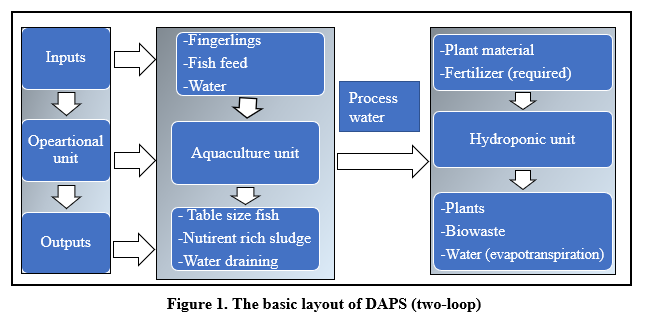STUDYING THE PRODUCTION PERFORMANCE OF DECOUPLED AQUAPONICS SYSTEM: A CRITICAL REVIEW
The concept of decoupled aquaponics system (DAPS) is very unique as it separates the recirculated aquaculture system (RAS) and hydroponic (HP) units with having the inherent advantages of plant and fish production
(Fig.1) . The out put efficiencies from the DAPS are also being upgraded compared to the traditional aquaponics system (TAPS) as it uses very minimum input resources
. For example, the growth performance of plant species under the DAPS could be improved by 39% in comparison to the pure hydroponic control nutrient solution
. In the case of fruit yield, DAPS could provide a 36% higher fruit yield as compared to the TAPS
. Moreover, the PH and fertilizer management in DAPS were more effective as compared to the TAPS
. The fish production, however, from the TAPS and DAPS was comparable
. In general, DAPS requires more water than the TAPS but it allows DAPS to better control over their water quality parameters, which leads improving their vegetable yield
. Overall, the major benefits of DAPS include
: a) highest efficiency configuration; b) low water use; c) less crop and animal risk; d) compact design in a small footprint; e) less plumbing; f) predictable, and consistent operation.
